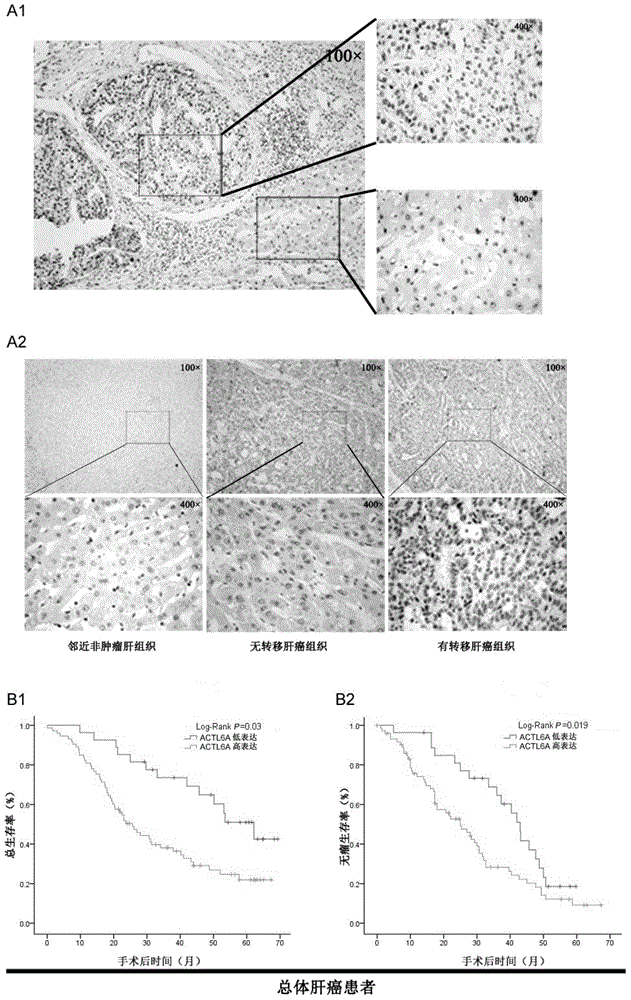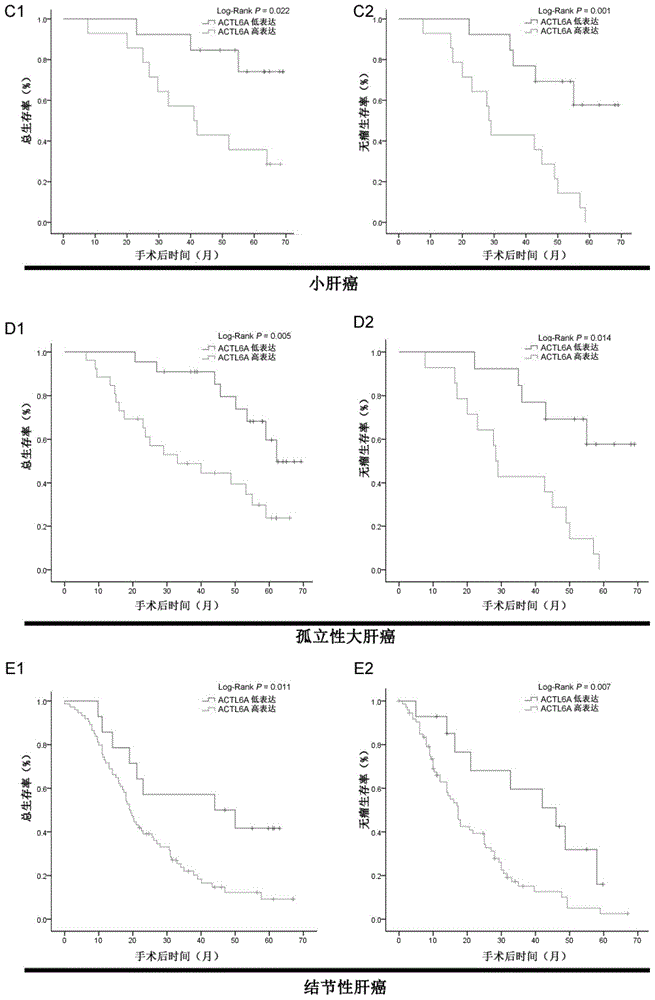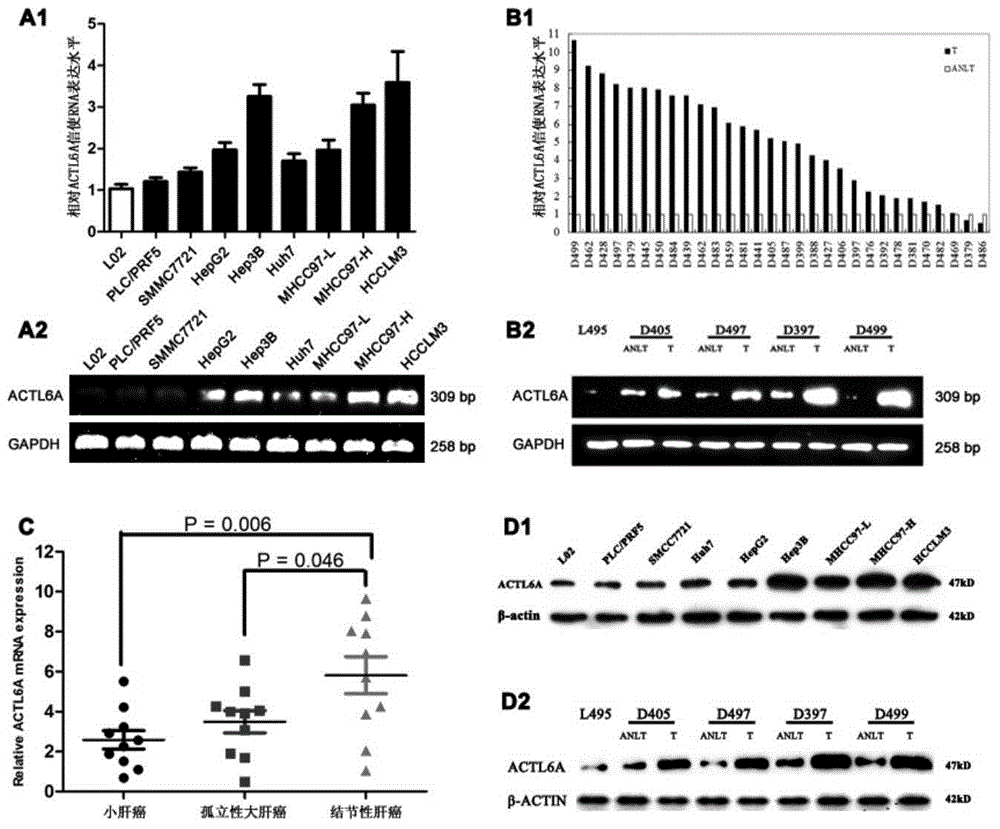Application of ACTL6A gene to preparation of medicine for treating liver cancer or preventing relapse of liver cancer after surgery
A technology for treating and inhibiting liver cancer, applied in gene therapy, drug combination, pharmaceutical formulation, etc., can solve the problems of liver cancer cell invasion and metastasis, cancer cell proliferation, etc., and achieve the goal of increasing the probability of cancer recurrence, improving the quality of life, and preventing the effect of EMT. Effect
- Summary
- Abstract
- Description
- Claims
- Application Information
AI Technical Summary
Problems solved by technology
Method used
Image
Examples
Embodiment 1
[0115] Using lentivirus as the vector, knock out ACTL6A in the plasmid, and then carry out the animal administration process and the results are as follows:
[0116] Hep3B knockout ACTL6A cells and Hep3B control cells were about 5×10 6 After each injection into the subcutaneous tissue of the left groin of nude mice, the obtained results are listed in Figure 7 In A. see Figure 7 Panel A in the middle: subcutaneous tumor formation experiments in nude mice showed that the subcutaneous tumors of Hep3B knockout ACTL6A cells with ACTL6A knockout were significantly smaller than those of Hep3B control cells in the control group. And as Figure 7 A shows that the volume of the subcutaneous tumor formed by the Hep3B knockout ACTL6A cell group is significantly smaller than the volume of the subcutaneous tumor formed by the Hep3B control group. Similar results are obtained after volume measurement and group comparison. The results are listed in Figure 7 in B. see Figure 7 Figure...
Embodiment 2
[0118] After the charge-reversal drug carrier PCL PEI / amide was used as the carrier to carry shACTL6A and then administered to animals, the experimental process and results were as follows:
[0119] The results of liver orthotopic tumor formation experiments were as follows: Figure 8 As shown in Figures A and B, see Figure 8 Panel A in the middle: The picture of liver tumor formation in situ shows that the tumor volume of Hep3B knockout ACTL6A cells in situ is significantly smaller than that of Hep3B control cells in the control group. see Figure 8 In B: The volume difference between the two groups is statistically significant. like Figure 8 A and B show that the liver tumor volume formed by the Hep3B knockout ACTL6A cell group is significantly smaller than the liver tumor formed by the Hep3B control group. Intrahepatic metastases and lung metastases of liver in situ tumor formation were detected, and the rates of liver and lung metastases in the Hep3B knockout ACTL6A ...
PUM
 Login to View More
Login to View More Abstract
Description
Claims
Application Information
 Login to View More
Login to View More - Generate Ideas
- Intellectual Property
- Life Sciences
- Materials
- Tech Scout
- Unparalleled Data Quality
- Higher Quality Content
- 60% Fewer Hallucinations
Browse by: Latest US Patents, China's latest patents, Technical Efficacy Thesaurus, Application Domain, Technology Topic, Popular Technical Reports.
© 2025 PatSnap. All rights reserved.Legal|Privacy policy|Modern Slavery Act Transparency Statement|Sitemap|About US| Contact US: help@patsnap.com



